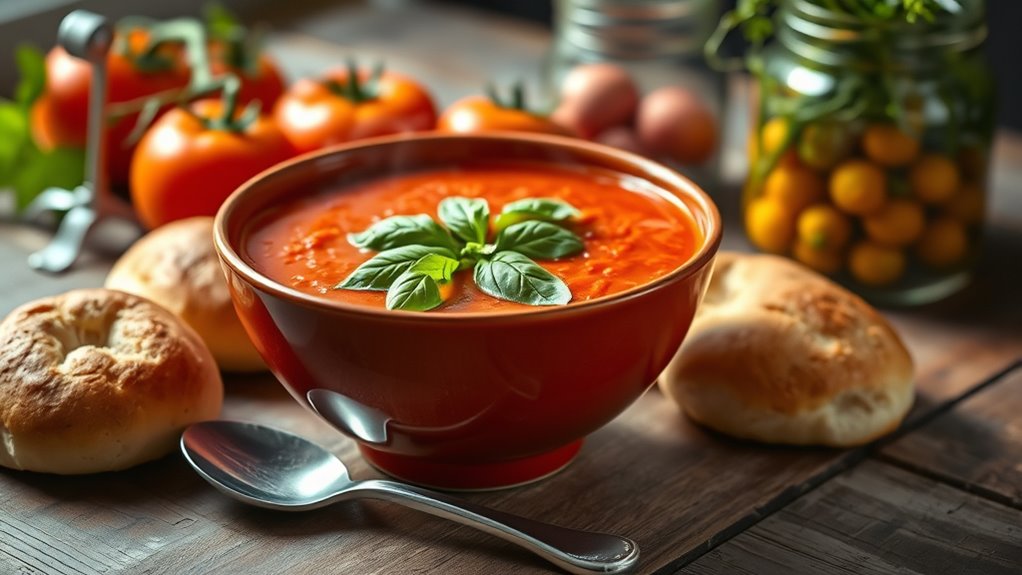Amish Tomato Soup blends garden-fresh tomatoes with simple pantry staples for a cozy, homestyle bowl. Start by sautéing onions and garlic in butter or oil, then add ripe tomatoes and stock, letting everything simmer gently. Let spices bloom in the aromatics, and keep the simmer steady to preserve tomato texture. This recipe delivers lycopene-rich richness and comforting, uncomplicated flavor. Curious about precise quantities and steps? You’ll uncover the full method and tips if you keep exploring.
Ingredients and Quantity
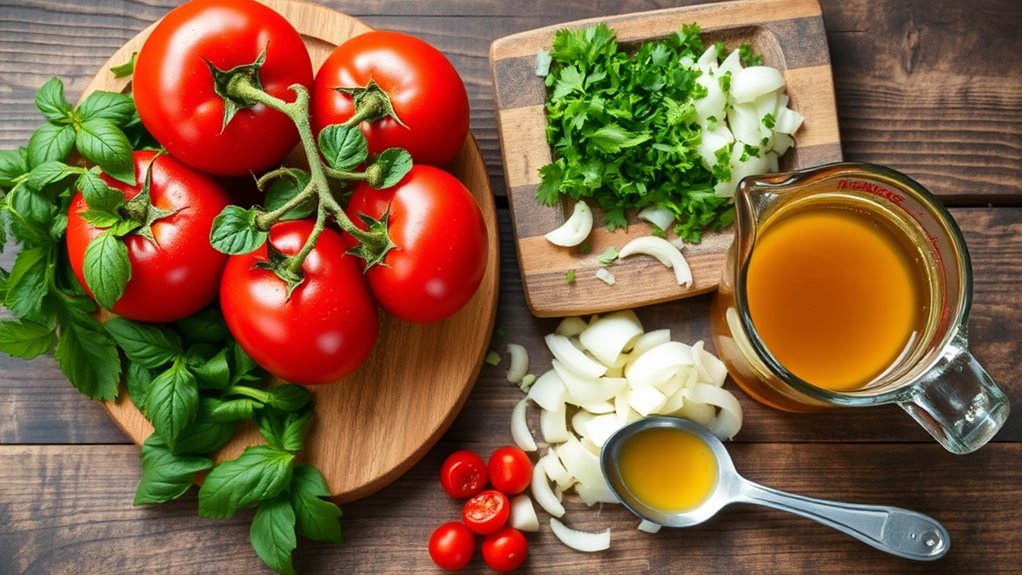
To make Amish tomato soup, you’ll need a simple, precise set of ingredients: ripe tomatoes, onions, celery, a bit of butter or oil, garlic, chicken or vegetable broth, a touch of sugar, salt, and pepper. You’ll select tomato varieties that suit your flavor—sun-warmed, vibrant, and balanced. This is Amish cooking with a modern spirit, focused on clarity and freedom in the kitchen. Gather ingredients with intention, measure thoughtfully, and prep calmly.
| Item | Quantity | Notes |
|---|---|---|
| Tomatoes | 2–3 lb | Varieties matter |
| Onion | 1 medium | Diced |
| Celery | 2 stalks | Minced |
| Butter/Oil | 2 tbsp | For sautée |
| Garlic | 2 cloves | Minced |
Preparations
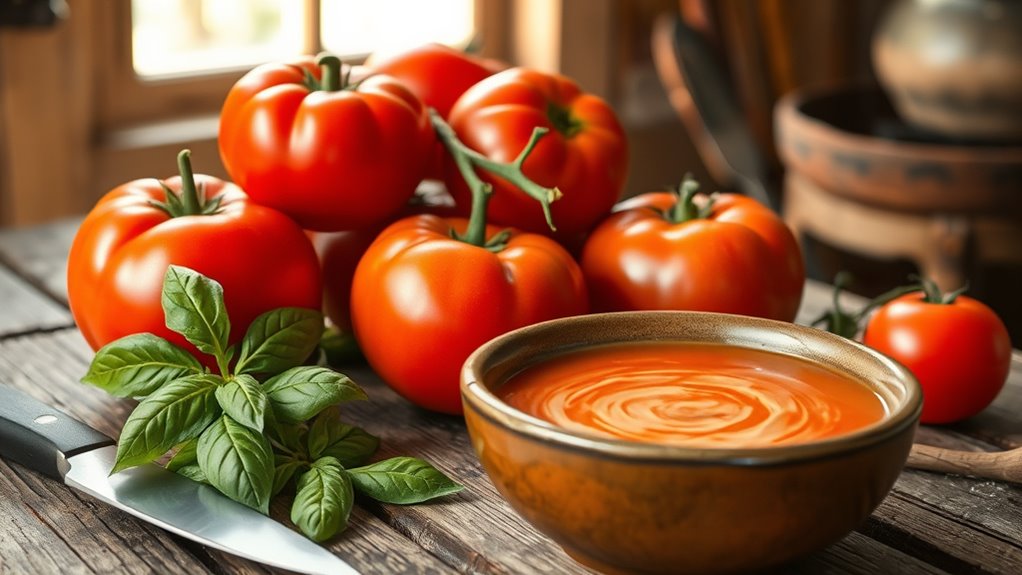
Now that you’ve gathered the ingredients, prep is all about getting everything ready to simmer smoothly. You’ll focus on precision and intention, aligning each step with thoughtful preparation techniques and smart ingredient selection.
1) Inspect for ripeness and aroma, choosing tomatoes that smell bright and look evenly colored.
2) Peel, chop, and measure onions, garlic, and herbs so flavors meld quickly without hesitation.
3) Arrange bowls of stock, cream, salt, and pepper within easy reach, ensuring a steady rhythm as you simmer.
As you proceed, stay curious about how texture shifts with time and heat. Your freedom lies in choosing timing, balance, and the pace of each addition, keeping the soup bright, honest, and true to its farmhouse roots.
Kitchen tools or Kitchenware Required
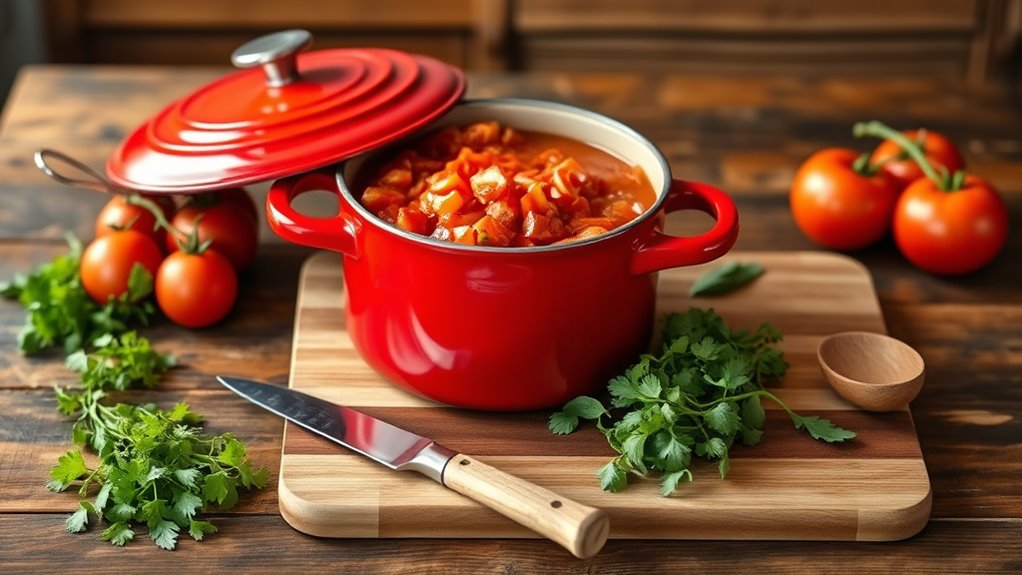
Before we start simmering, gather a few dependable tools: a sharp chef’s knife and cutting board for precise prep, a sturdy large pot for the base, a wooden spoon or spatula for steady stirring, and a ladle for portioning. You’ll want reliable kitchen essentials that last, since good cooking utensils save time and energy. With the right gear, you feel free to improvise and trust your instincts.
| Tool | Purpose |
|---|---|
| Chef’s knife | Precise chopping |
| Cutting board | Safe prep surface |
| Large pot | Simmering base |
| Ladle | Serving portions |
These essentials keep your kitchen efficient, focused, and intentional, supporting curious experimentation while honoring simplicity. Your freedom grows as tools disappear from the scene, leaving only clarity and control.
How to Cook
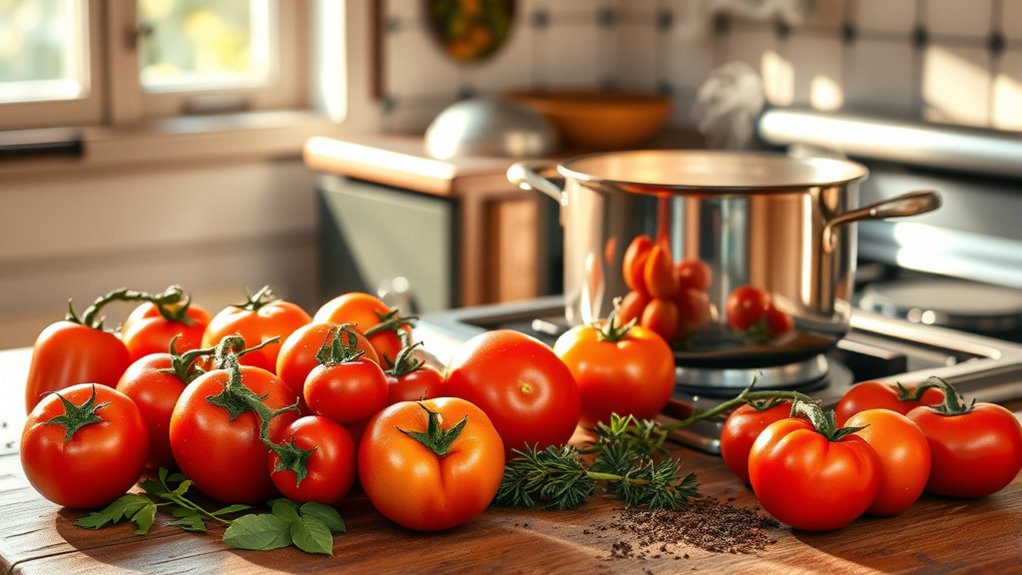
- Heat oil or butter in a pot.
- Sauté aromatics like onions and garlic until they soften and release fragrance.
- Add tomatoes and stock, then bring to a gentle simmer.
- Bloom spices in the sautéed aromatics for subtle flavor enhancement.
- Maintain a steady simmer, avoiding rapid boiling to preserve the structure and sweetness.
- Stir gently and time carefully to build depth and respect the tomato’s brightness.
- Remove from heat and let the mixture rest briefly to allow flavors to settle and mingle.
- Taste and adjust seasoning as needed throughout the process.
How to Serve
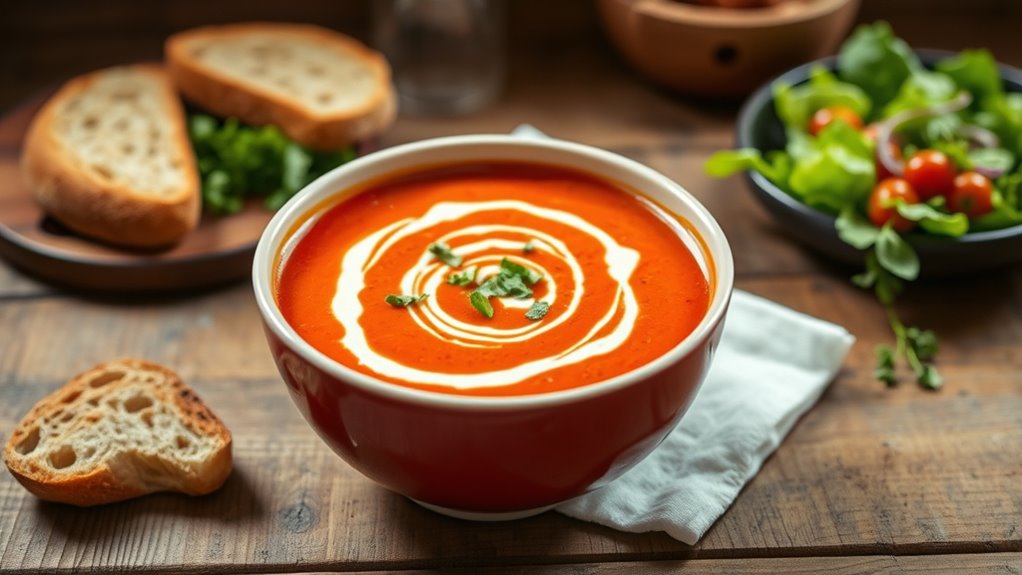
To serve Amish tomato soup, ladle the steaming broth into bowls, letting the bright tomatoes and creamy texture shine. You’ll notice its balance of tang and sweetness, inviting a thoughtful, deliberate bite. For a simple finish, drizzle a touch of cream and sprinkle fresh herbs, if you like, to amplify brightness without masking character. Serving suggestions keep the focus on accessibility: warm crusty bread, a small salad, or crisp crackers create textural contrast. Pairing options center on contrast and comfort—savory cheeses, like aged cheddar, or a light, peppery olive oil can lift the tomato backbone without overpowering it. Consider a rustic presentation: bowls, spoons, and a quiet table. Enjoying with mindful pace honors the soup’s homegrown roots and your freedom to savor.
Tips
For best results, start with ripe, flavorful tomatoes and taste as you go, adjusting with a pinch of sugar or a splash of vinegar to balance sweetness and acidity. In this Tips section, you’ll refine your method with purposeful moves that feel liberating and precise, guiding you toward bolder flavor without fuss.
1) Cooking techniques: sauté onions gently before tomatoes to build depth, then simmer with a touch of broth for smooth texture.
2) Flavor enhancements: finish with a drizzle of olive oil and fresh herbs off heat to preserve brightness.
3) Consistency checks: skim surface fat, adjust salt, and test with a spoon, ensuring a clean, balanced finish you can trust.
Food Value and Benefit
Tomato soup is both nutritious and comforting, offering a range of health benefits that align with simple, wholesome cooking. The soup is rich in essential vitamins and minerals, making it a valuable addition to a balanced diet.
Tomato soup nourishes with essential vitamins, supporting a balanced, comforting, wholesome diet.
Food Value:
- Rich in lycopene, a powerful antioxidant found in tomatoes
- Contains vitamins A, C, and K
- Provides minerals such as potassium and iron
- Includes immune-boosting compounds from onions and garlic
- Contains dietary fiber aiding digestion
Benefits of Eating This Recipe:
- Supports heart health due to high antioxidant content
- Enhances immune function with vitamins and bioactive compounds
- Promotes steady energy release without heaviness
- Aids digestive health through fiber and digestive-friendly herbs
- Helps with appetite control and mental clarity
- Easy to customize with healthy fats like olive oil or moderate cream to maintain nutrient density
This tomato soup offers a nutrient-dense, flavorful option that supports mindful eating and a balanced lifestyle.
Frequently Asked Questions
Can I Freeze Amish Tomato Soup Leftovers?
Yes, you can freeze Amish tomato soup leftovers. Picture a freezer as a museum of flavors, you, curator. Use freezing containers, label clearly, and practice leftover storage discipline so every scoop stays vibrant and ready for freedom.
What Pantry Substitutions Work Best for Tomatoes?
You can swap pantry tomatoes with canned tomatoes and tomato paste to mimic fresh acidity; adjust sweetness and liquid as needed, tasting often, so you maintain bright flavor while preserving your freedom to improvise.
Is This Soup Dairy-Free or Vegan-Friendly?
Yes, it’s dairy-free and vegan-friendly as written, with vegan-alternative tweaks available. If you seek vegan alternatives, you’ll enjoy creamy cues from coconut or blended cashews; adjust soup ingredients to keep richness without dairy.
How Long Can the Soup Safely Refrigerate?
You can refrigerate dairy-free soup for 3 to 4 days, keeping it tightly sealed. For food safety, reheat to steaming, don’t leave it out longer than two hours, and store promptly. Your soup storage decisions protect flavor and health.
Can I Add Herbs for Extra Flavor?
Yes, you can add herbs for extra flavor. Try fresh herb varieties like basil, thyme, or oregano, plus subtle additions of parsley or dill. These flavor enhancements brighten tomato soup while preserving its comforting, freedom-loving character.
